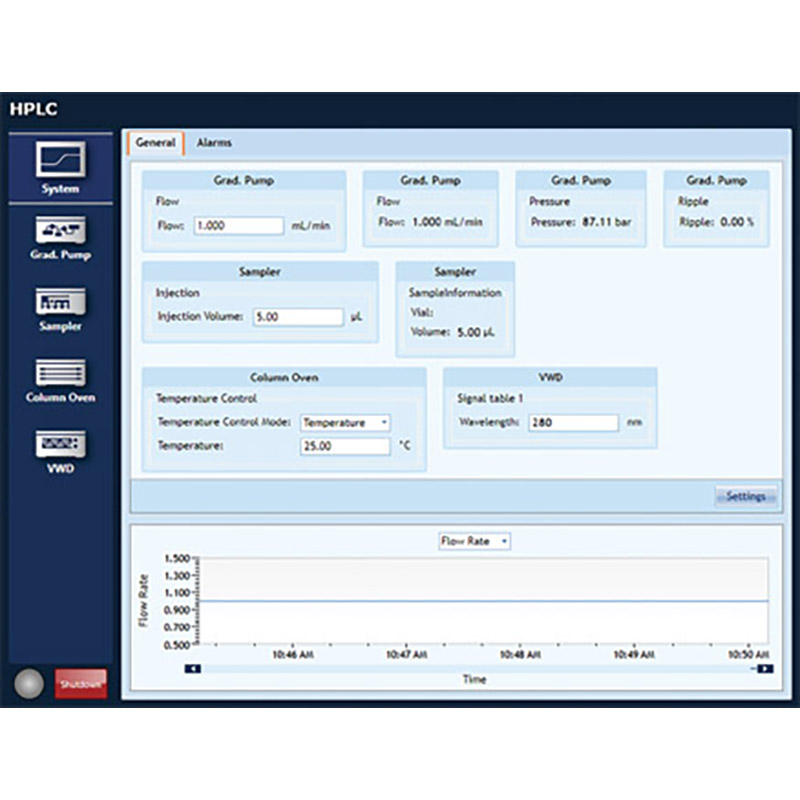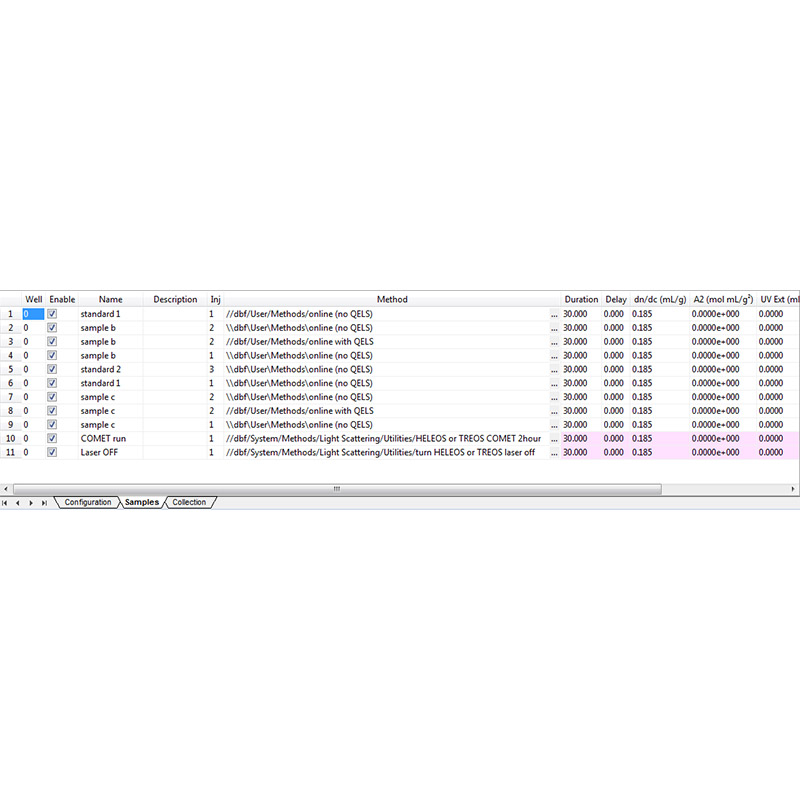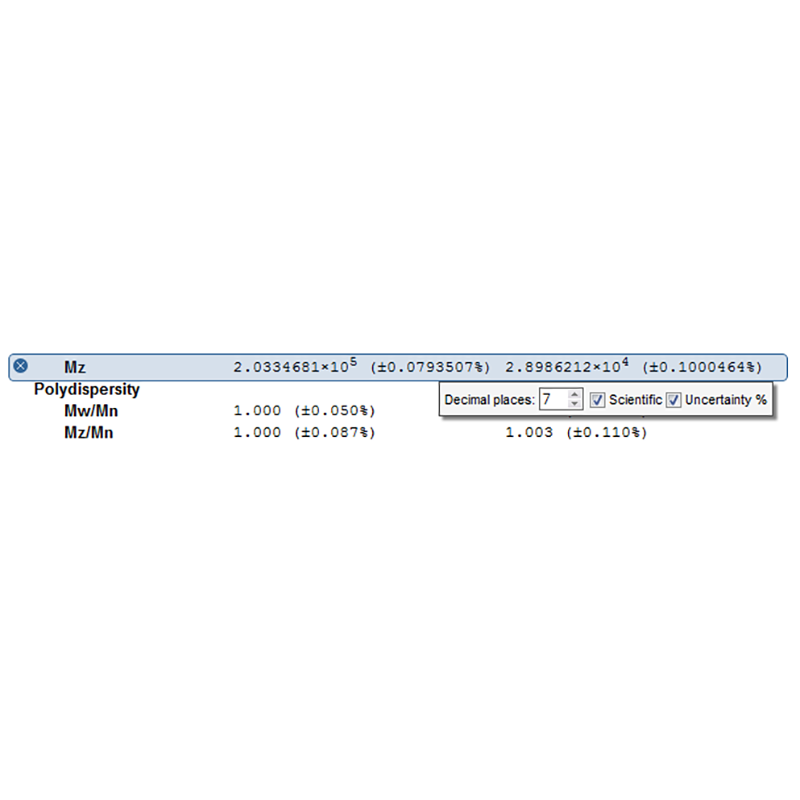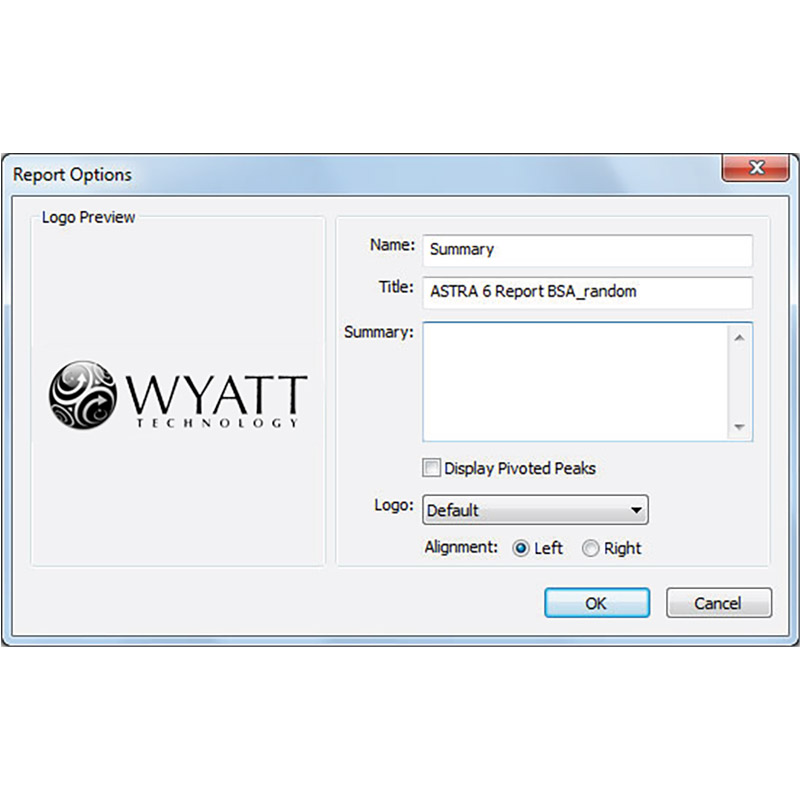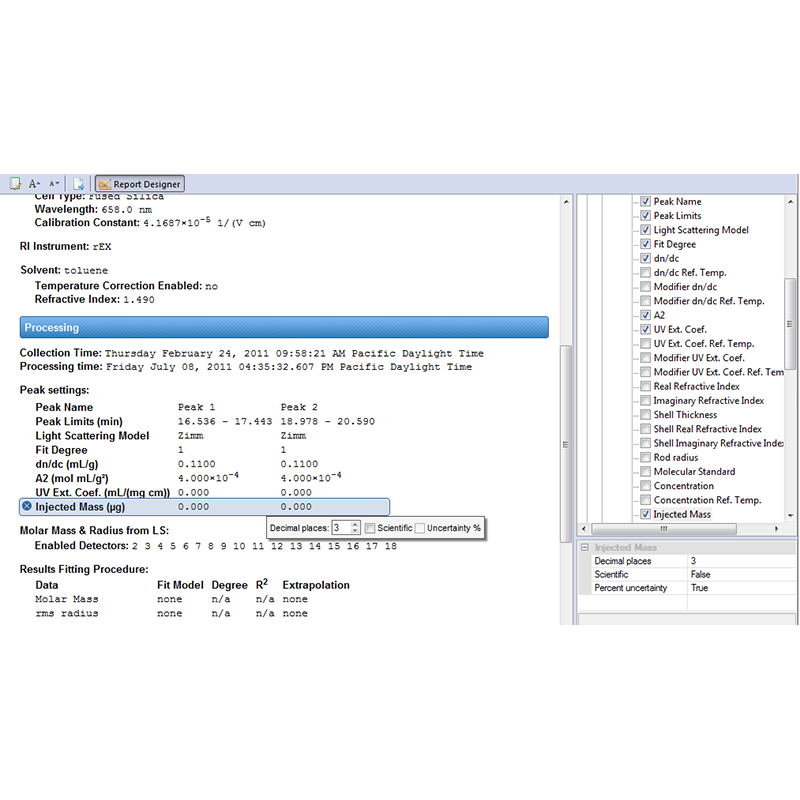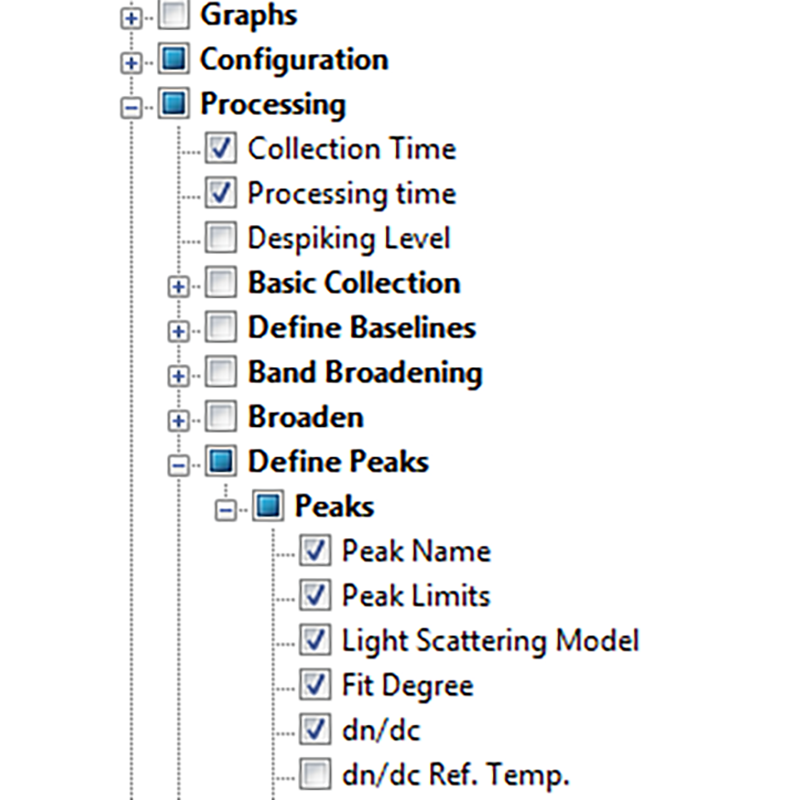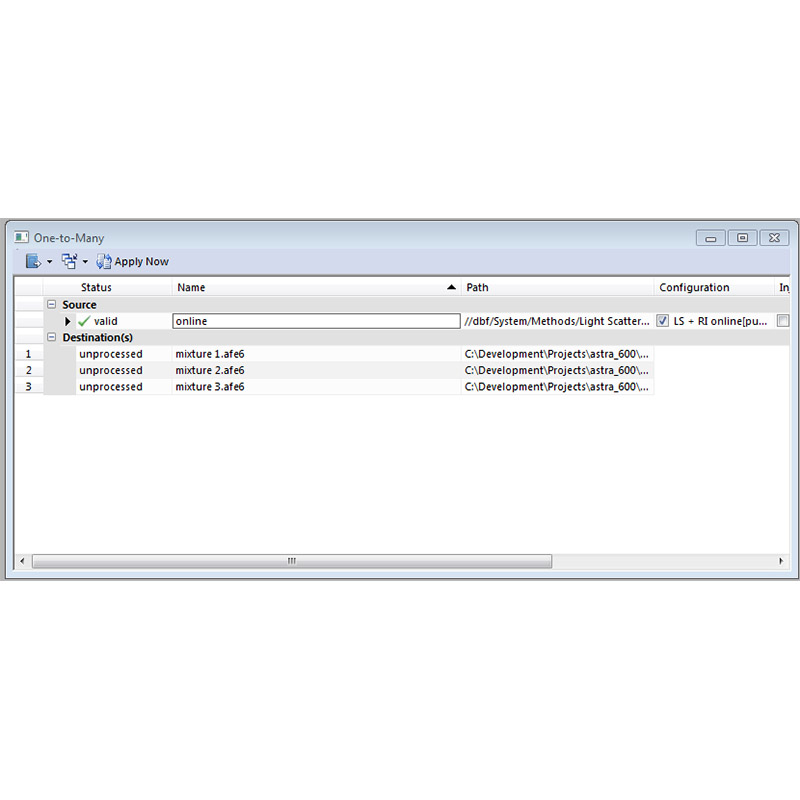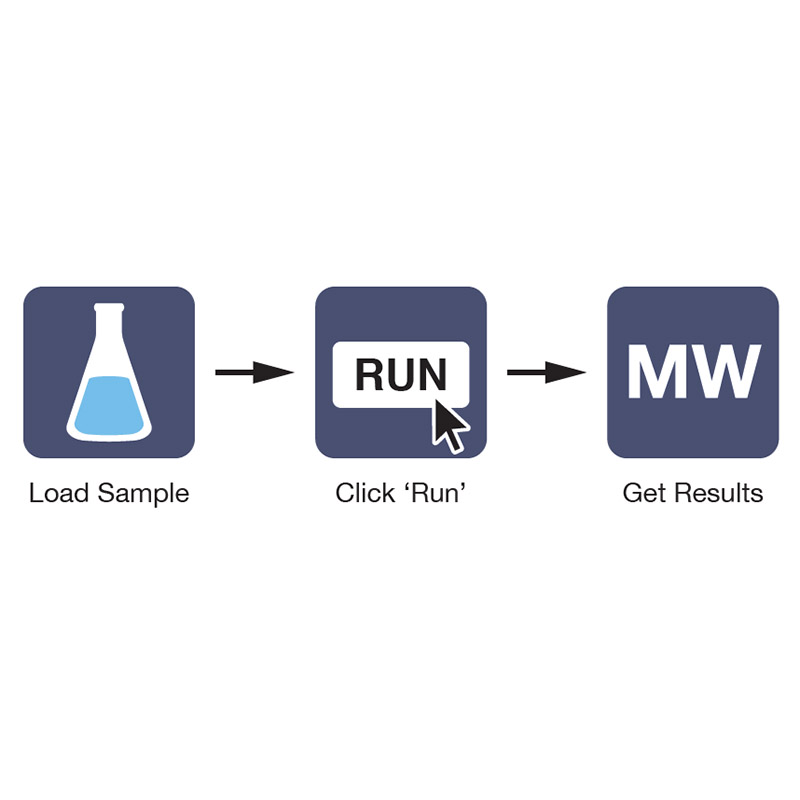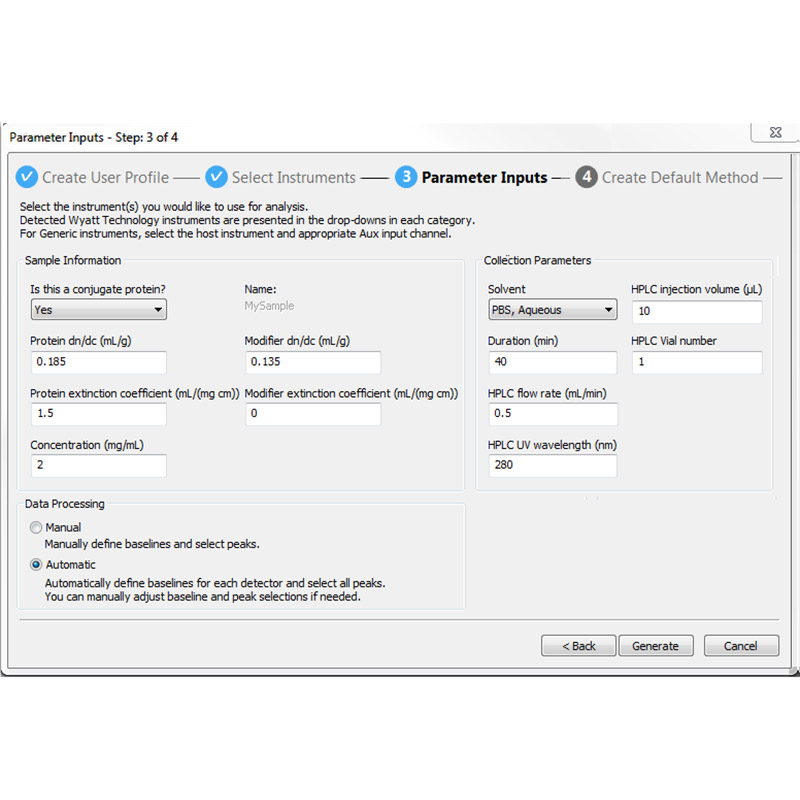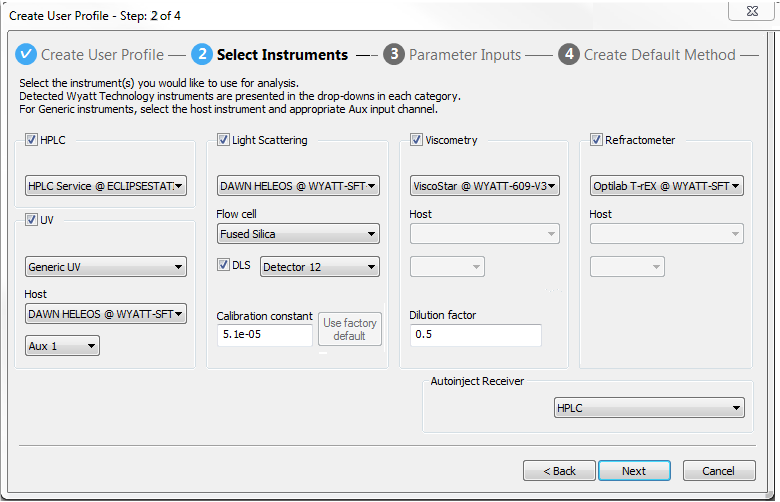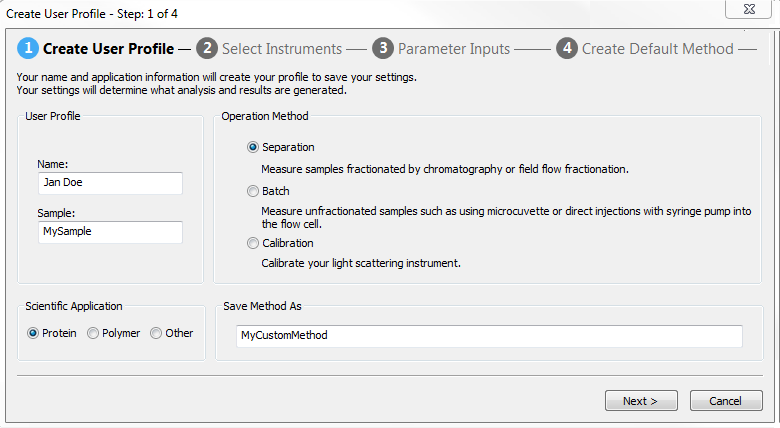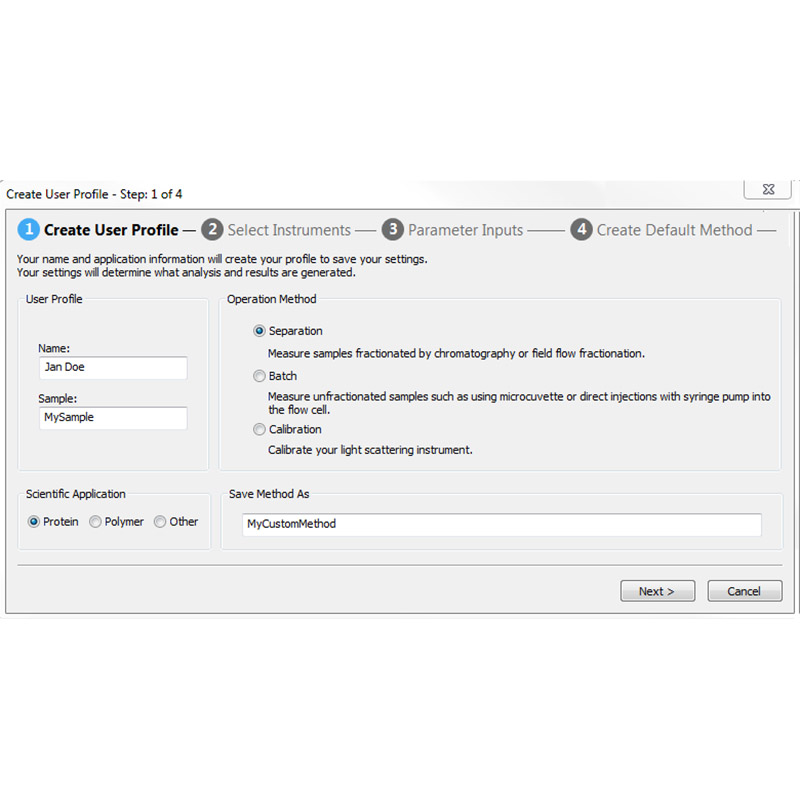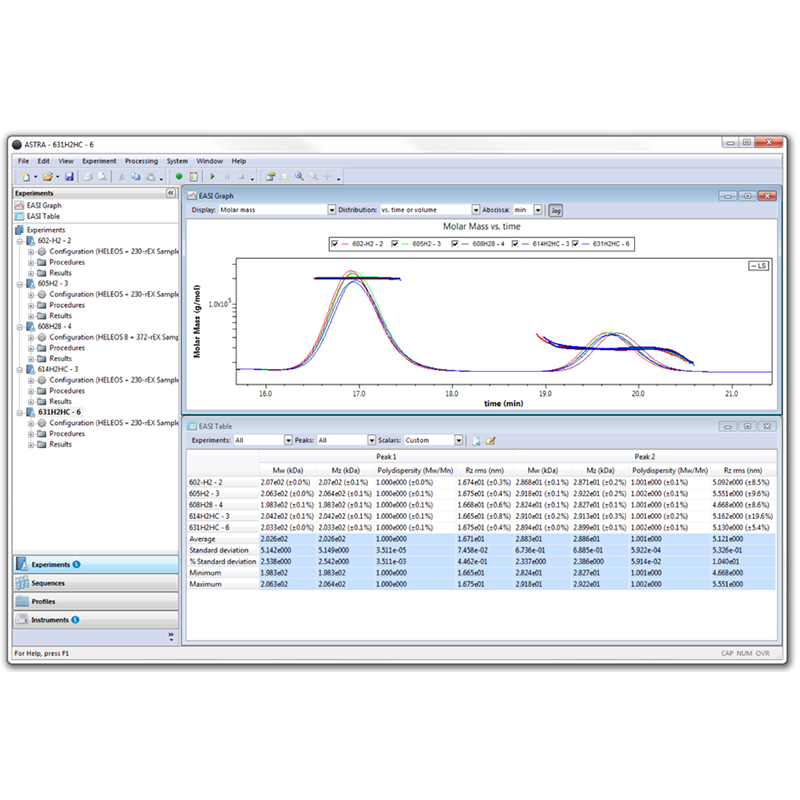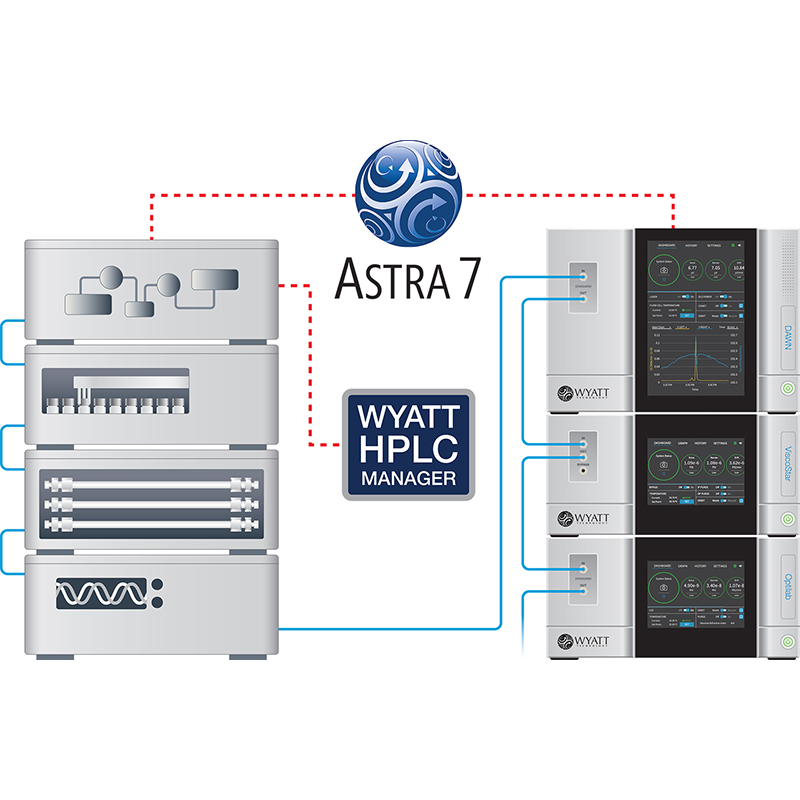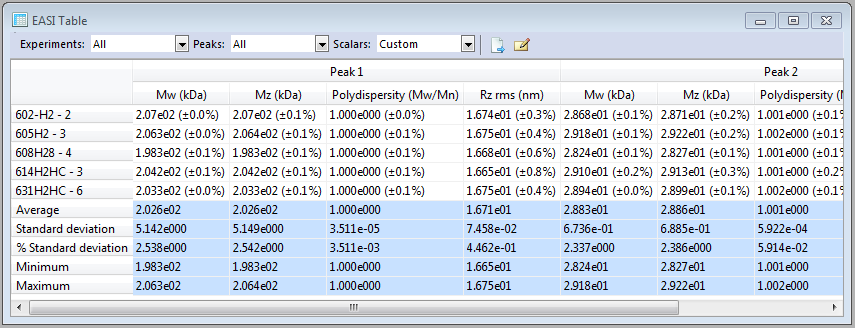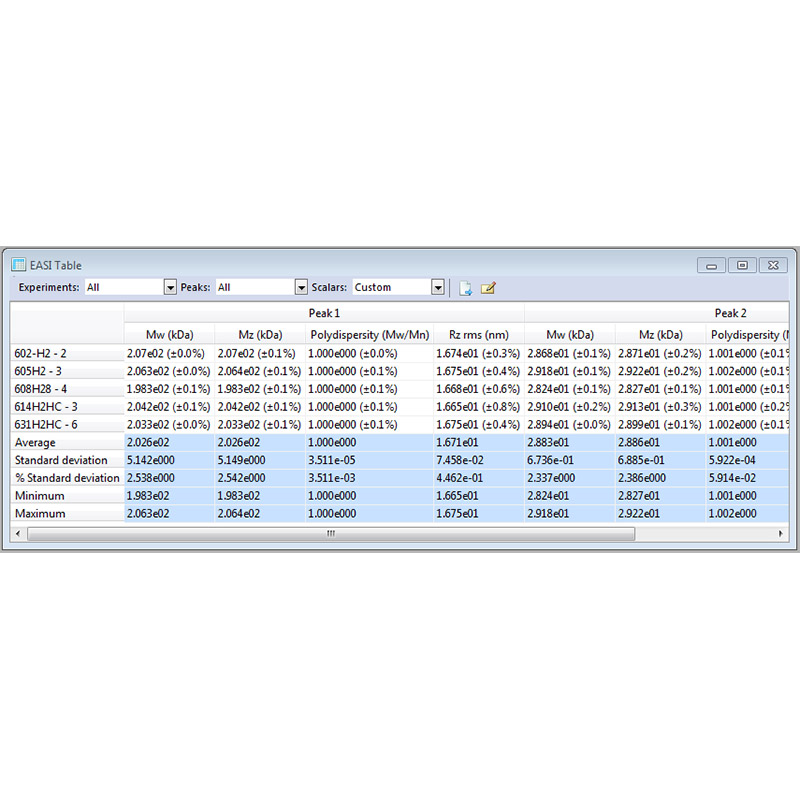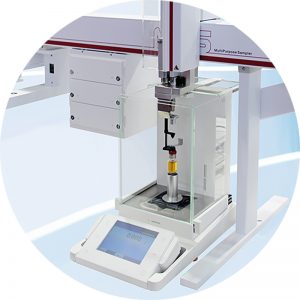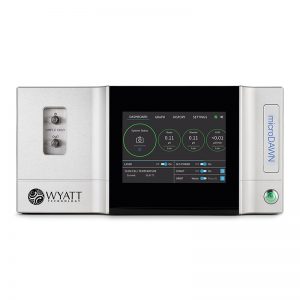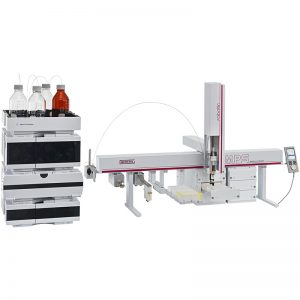Description
ASTRA Features and Capabilities
Browse these tabs to learn about the many capabilities and features in ASTRA which make it is the most powerful and versatile software available for the characterization of macromolecules and nanoparticles via multi-angle and dynamic light scattering.
ASTRA 7 increases productivity for routine analyses
Running a SEC-MALS analyses has never been easier. ASTRA’s One-Click MW™ feature complete an entire method at the click of a button.
Click on Run Default and ASTRA will:
- Synchronize data collection with your HPLC
- Autoset parameters to determine MW and Rg
- Generate custom reports and graphs
- Prepare for the next run
- run-default-button
Method Builder
ASTRA’s Method Builder simplifies the specification of methods for the most common protein and polymer analyses, in three intuitive steps:
- Choose an analysis profile
- Specify the instruments
- Enter additional parameters
Then save the method, load the sample(s), click Run Default and return later to find out the MW results in the final report.
Freedom to Explore
With ASTRA, you are never locked in to default methods or standard procedures. You always* have access to each parameter and processing step to review, validate and improve.
*Except network accounts where access is limited under the 21CFR(11) compliant Security Pack.
Ahead of the Curve
As you build expertise and confidence, and move on to complex analyses, ASTRA allows you to refine the results of automated processing with fine adjustments to peak selection, baseline specification, detector filtering and other settings.
HPLC Control
Full digital synchronization between your HPLC system, Wyatt detectors and ASTRA 7:
- Minimizes user errors
- Runs SEC-MALS from a single, familiar environment
- Saves you time and money
ASTRA 7’s HPLC control modules works with standard Agilent hardware including pumps, autosamplers, column ovens and UV/Vis detectors.*
*Control of additional HPLC instruments coming soon
Integrated HPLC control
Let ASTRA take control of your HPLC stack for effortless synchronization between injections and data collection. ASTRA 7 eliminates the need for separate HPLC and light scattering software. HPLC modules are listed together with Wyatt detectors in a common experiment configuration, and key parameters such as vial position, injection volume and flow rate specified in ASTRA’s sequences.
HPLC Manager
The HPLC Manager app controls and monitors HPLC modules including pumps, column ovens, UV detectors and autosamplers, right from the desktop. Included free with the HPLC Control module.
High Throughput Processing
Built from the ground up to handle with ease large sets of data, ASTRA has the tools you need to process and report on sequences containing many samples, including replicates. “One-to-Many” processing interface lets you focus on your goals, and leave the drudgery to the computer.
EASI Table
Quickly compare multiple data runs with the EASI Table feature to assess compound stability and consistency. The table data can be exported in a variety of formats, or copied and pasted into your favorite word processing software.
Specify which data should be displayed in EASI Table, as well as the format and precision used to display the values. Choose from percent or numerical uncertainties, or omit them entirely.
Sequence Processing
Sequences are used to specify and control the automated collection of data as well as system functions. A sequence can be configured with the default method or a different method can be specified for each sample. Sequences also perform post-collection maintenance, such as running the COMET flow cell cleaner or switching the Orbit to solvent recycle mode.
In the Samples view, it is possible to modify sample parameters on-the-fly, adding samples, changing collection times, or skipping samples.
Let your computer do the work.
ASTRA allows you to process an experiment as you wish, then instruct the computer to apply the same settings and analysis steps on any number of additional data files. You can quickly and easily specify which elements of your ‘source’ experiment should be incorporated in the target experiments.
Once the processing is finished, your resulting data files are fully analyzed and ready to be reviewed.
Unmatched Analysis
Building on over 40 years of light scattering research and development, ASTRA 7 includes an unrivaled range of analysis features. ASTRA takes full advantage of modern multicore computers, processing data at blazing speeds and with superior accuracy.
Molar Mass Determination
Determine molar mass and size.
Molar Mass via Light Scattering
Light scattering stands alone in its ability to measure the molar mass of macromolecules in solution both accurately and quickly.
Molar Mass via Conventional and Universal Calibration
Build a bridge between legacy conventional and universal calibration results and modern, accurate light scattering analysis.
Protein Conjugate and Copolymer Analysis
If you have an RI detector, a UV detector, and a light scattering instrument, you can directly measure the molar mass, size, and relative fractions of copolymers and protein conjugates.
Particles and Number Density
It is possible to measure the size and number density of a sample with just a light scattering instrument. ASTRA supports several sophisticated models to determine the size of a macromolecule based solely on the angular variation in the light scattering intensity.
On-Line QELS
With the support of a QELS instrument module, you can extend your data analysis to determine the translational diffusion and corresponding hydrodynamic radius of your samples.
QELS batch Regularization and Cumulants
Determine translational diffusion and corresponding hydrodynamic radius of your unfractionated samples.
Viscometry
ASTRA provides several analysis features that take advantage of viscosity data. Use these features to further quantify your macromolecules to determine Mark-Houwink-Sakurada terms, hydrodynamic radius, and more. Learn more…
Molecular Conformation
The shape of molecules can be assessed from the molar mass and rms radius of the sample.
Distributions
Sample properties are determined for individual peaks in a chromatography run. ASTRA also supports visualizing these data in terms of the distribution of these measured quantities. This is extremely powerful when assessing how much of a sample falls with a particular range of molar mass or size.
Second Virial Coefficient (A2) Measurements
The second virial coefficient (A2) is a measure of macromolecular self-association, and is one of the few parameters that can be used to predict the crystallization properties of a sample. ASTRA allows you to measure this important characteristic.
dn/dc and UV extinction coefficient determination. Measure the dn/dc and UV extinction coefficients for your novel samples.
While dn/dc and UV extinction coefficients are documented for many existing compounds, they must be experimentally determined for novel samples. ASTRA provides analysis features to measure these critical sample characteristics.
Band Broadening Correction
While most analysis packages force you to live with the undesirable effects of passing a sample through a series of detectors. ASTRA’s revolutionary band broadening correction accounts for these effects to give you most accurate results possible.
Absorbance Correction
If a sample absorbs light at the MALS laser wavelength, molar mass calculations will be skewed due to less light reaching the scattering volume than expected. ASTRA uses the Forward Monitor detector signal available in all Wyatt MALS instruments to calculate the laser attenuation produced by sample absorption and correct the scattering signal levels. In this manner accurate molecular weights are ensured, even in the presence of absorbtion.
Blank Subtraction
Certain analysis techniques, such as FFF, cause large changes in refractive index and viscosity measurements as flow rates are modified during the run. This can make it difficult to properly analyze the file, as the RI and viscosity changes due to flow and pressure changes mask those caused by the sample. ASTRA provides a mechanism to subtract a data collection run without sample (a ‘blank’) from a sample run to reveal the sample-specific signal changes.
Error Analysis
Wyatt Technology software is written by scientists for scientists. ASTRA was designed from the ground up to properly compute and propagate uncertainties to ensure our results are publication-quality.
Cutting Edge Technology
Wyatt Technology is committed to pushing macromolecular characterization to new levels. Consequently, we have a very strong program to develop intellectual property. Many of the algorithms in ASTRA are on the cutting edge of scientific analysis, and are either patented or have patents pending. ASTRA is protected by:
- U.S. patent numbers: 5,528,366; 6,411,383; 6,651,009; 6,774,994; 7,386,427; 7,911,594;
- German patent Numbers: 694 33 615.7-08; 603 19 078.2-08;
- British patents based on European application numbers: EP 0 665 433; EP 1 510 807;
- Japanese patent Numbers: 3,580,380; 4,439,211; 4,381,914; and other patents pending.
State of the Art Reporting
Take control of your analysis reporting with ASTRA’s custom reporting system. With just a few mouse clicks, adjust which data to display and how it should be formatted. Add your own logo, incorporate some personal notes, or just pare the default reports to focus on what you care about.
Personalize your reports.
In addition to the numerical and content selections provided in the Report Designer, ASTRA allows you to specify a logo image, and where it should be displayed. You can specify the title as well as additional summary information or notes that will appear on the report.
Personalized Data Selection
Control the content and presentation of your reports with a few mouse clicks. Any bit of data generated during analysis is now available for you to incorporate into your report, with just a click of the mouse.
Built from the ground up to comply with 21 CFR Part 11, ASTRA 7 with Security Pack makes compliance complete and intuitive.
- Data Safety and Integrity
- User Security
- Audit Trails
- Electronic Signatures
- Enforcing Permitted Sequences
- Human Readable Records
- Validation
Full Numerical Formatting
Click on a result, and ASTRA presents a simple, intuitive interface for controlling the numerical precision and display format of the result. Quickly and easily change results from fixed point to scientific notation, increase or decrease the number of significant digits to display, and determine if you wish uncertainties to be displayed as numerical values or percentages.

